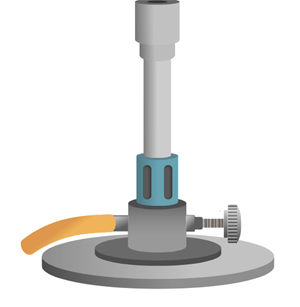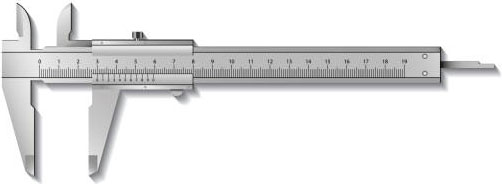

A long, thin rod of some unknown material is placed next to a source of heat. It's initial length and initial temperature can be measured. Then the heat source is turned on and its heat energy begins transferring to the rod, causing it to increase in length. The amount of linear expansion of the rod per degree of temperature increase is called its coefficient of linear expansion and is specific to the type of material. By measuring the rod's new length at a higher temperature you can determine the coefficient of linear expansion for this particular rod and thus determine what material it is likely made of. To minimize error you should allow the rod to expand a sufficient amount before taking your final length and temperature measurements to use in your calculations.
A highly zoomed-in view of the end of the rod is shown below so that you can watch the end expand as it is heated (and contract when it cools).




Note the initial length and temperature of the rod as measured by the caliper and thermometer. Use the ON button to turn on the burner and begin heating the rod. When the length has increased a notable amount ( at least half a millimeter increase in rod length ), note the temperature and length of the rod your instruments measure at that point. If you turn the burner off, the length of the rod will begin decreasing again as it slowly returns to room temperature.